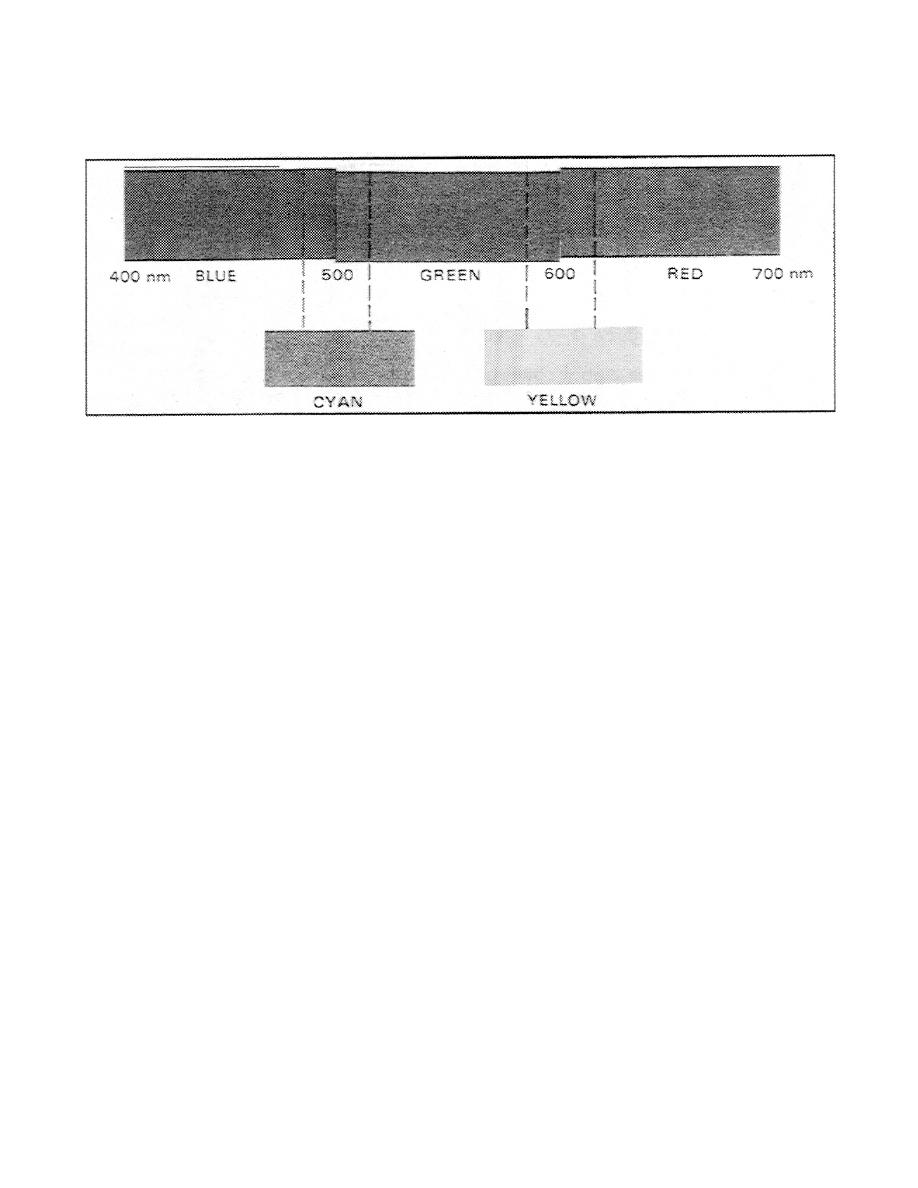
Infrared falls immediately above the 700 nm portion of the
spectrum and ultraviolet immediately below the 400 nm portion as illustrated
in figure 1-4.
Figure 1-4.
Visible spectrum
b. The Visible Spectrum. "White light" is a term used to identify the
visible spectrum when all the wavelengths, from 400 nm to 700 nm, are
present in nearly equal amounts.
Due to the adaptability of the eye and
other human and psychological reasons, it is impossible to establish a
standard for white light.
For example, indoor lighting and sunlight both
appear to be white.
(1) Why do both types of light appear white when they do not contain
the same amounts of visible radiation?
They appear white because the receptors in the eye are sensitive to red,
green, and blue wavelengths of light.
They adapt their sensitivity to
compensate for imbalances in wavelength proportions.
(a) For example, sunlight has a higher percentage of blue and
green wavelengths and is relatively deficient in the red region of the
spectrum.
(b) As a result, the red receptor increases in sensitivity until
there is the necessary balance of wavelength impulses reaching the brain.
For this reason, the viewer perceives the sensation of white light.
(2) While the individual receptors have the capability
of adjusting in sensitivity, the eye itself is not selective
regarding to individual wavelengths. In order for the eye to
1-6
SS0514



 Previous Page
Previous Page
